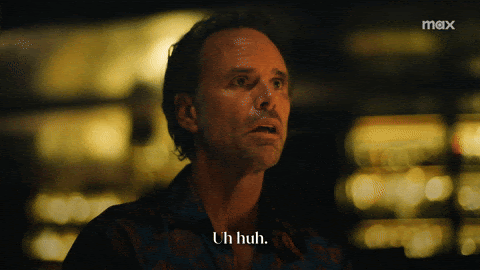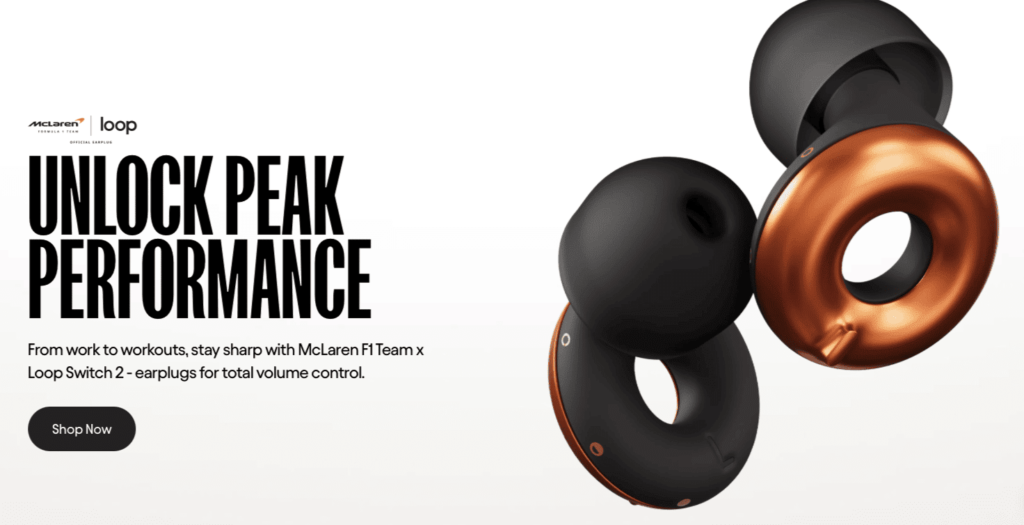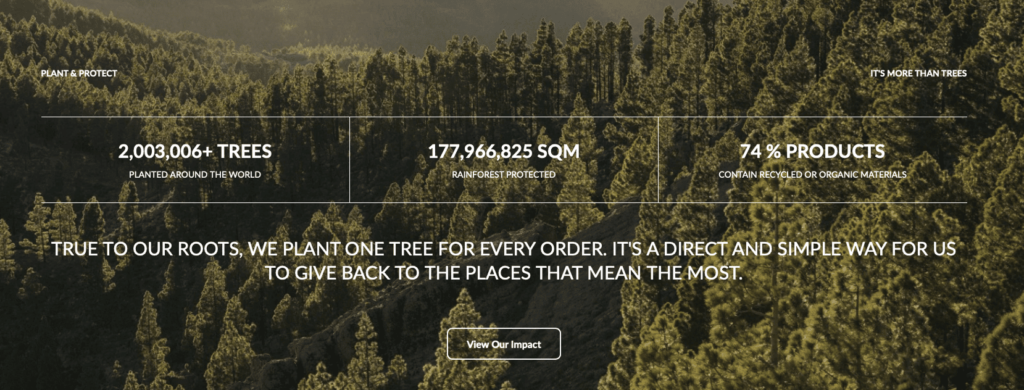
Making this small tweak can make your copy instantly more persuasive
Learn how you can use a mix of tenses in your brand's copy to meet your customers where they are in their journey and sell more stuff.

A couple of years ago — before Do Words Good was a thing — we worked together on some copy for a freelance client and we thought we’d absolutely nailed it.
We were imagining pats on the back and “wow, this is the best thing I’ve ever read” kinds of feedback.
Then we got on the call.
“The tenses shift as you move down the page. It’s going to confuse customers.”

Now, to be completely fair, they weren’t wrong.
The tenses did shift. And that’s a big no-no when you’re writing novels and essays.
But in copywriting, it helps move the customer through a journey.
At the time though, all we had to back that decision up was our gut instinct.
We knew it felt and read better. We just didn’t anything beyond that to back it up.
So, today’s email is the thing we wish we’d had on that call: a deep-dive into the science behind when and why to use different tenses in your copy.
Let’s get into it.
💡 This week’s big idea: what tense you write your copy in isn’t just a grammar decision. It’s a consumer psychology decision.
There’s this cool concept in psychology called “temporal framing.” Basically, the way we make decisions changes on whether we think it’s happening now, happening in the future or if it’s already happened in the past.
In fact, in a 2024 study, researchers found that the way we frame time in copy (AKA what tense we use) directly affects how close or distant our customers feel to our brands.If we’re looking to confirm ideas we already have or reduce risk, we find present and past tense messaging more persuasive.
If we’re looking to change something, grow or improve our situation, we prefer future tense messaging.And that’s not just a semantics thing, it’s actually been found to impact trust, action, and buying decisions.
So let’s break down how you can mix up your tenses to make your copy work with how our brains work.
If you’re writing headlines, ads or anything where you want to grab attention: write in the present tense
All good copywriting starts from a place of meeting the customer where they’re at.
Or, put another way, even the best copywriters can’t create desire for a product. All you can do is channel the thoughts and feelings that are already in your customers’ heads and guide them towards your product.
And that’s why whenever we write any bit of copy that needs to be big or attention-grabbing or speak to top of funnel customers, we write in the present tense.
👉 Copy written in the past tense requires us to mentally translate it to our current experience, but copy written in the present tense immediately makes your product relevant to where your customers at, so it’s easier for them to process and understand.
👉 Writing in the present tense is perceived by customers as more certain, relevant, and truthful than past or future tense.
👉 Present tense is scientifically proven to be more persuasive. Research published in Journal of Experimental Social Psychology found that that messages written in the present tense are significantly more persuasive than any other tense.
Loop Earplugs nail this. Their entire hero section is written in the present tense 👇

✅ Written in the present tense to grab the customers’ attention and build trust? Check.
✅ Customer as the hero? Check.
✅ Clear, tangible benefits? Check.
Now, compare it to the same message if it was written in the past tense 👇

It’s not nearly as compelling, right?
The differences are subtle, but they make a massive difference.
👉 It feels more brand-focused. “We’ve teamed up…” and “unlocked” shift the focus from the customer as the hero to all about the brand’s achievements.
👉 There’s no reason for the customer to care: by its very nature, past tense copy tends to read more like an announcement or a press release than sales copy, so it always feels more self congratulatory back-patting and less “you’ve gotta have this”.
👉 It feels less urgent: Because unlocked is past tense and passive, it suggests the action is already done. The customer doesn’t feel like they need to take action.
But that doesn’t mean that you should write everything in the present tense…
For product descriptions and digging into the benefits: write in the future tense
While present tense is really good for getting the customer interested in buying your product, future-tense is absolutely banging for getting them scrambling for their wallet.
In fact, studies show that future-focused language can increase conversion rates because it taps into the customer’s imagination and helps them picture already owning your product. (This is endowment effect, which we’ve talked about before.)
👉 A study in 2004 found that vivid, future-oriented descriptions increase personal relevance and perceived risk reduction AKA, when people can picture how they’ll benefit from something, they’re more likely to take action.
👉 Another study by Knutson et al. used fMRI scans to show that imagining a positive future event activates the brain’s reward system, even before the event happens.
However, there’s a bit of a problem with future tense… it makes for horrible, janky, stilted copy.
Why? Because the usual construction of future tense is will + your verb. (You will enjoy XYZ, we will leave at 8pm…)
Not only does writing like that make your copy clunky as hell, but it falls into that trap of telling your customers how they’ll feel rather than showing them.

However, there is a way to cheat: write in the present tense but talk about the future.
This is called the futurate present, where it’s technically written in present tense but talking about the future. A sentence like “The train is leaving at 8pm” is a good example. Present tense, talking about the future.
That means that when someone reads copy that’s written in the present tense but clearly evoking a future experience (for example, “You take a sip and feel your shoulders drop.”), the brain does something called episodic future thinking (a fancy term for imagining using your product) which drives purchase intent.
In other words, if your copy helps customers see themselves using your product in the future, they’re more likely to want it.
Check out how Bio & Me weave classic future tense into their product descriptions with a sneaky “that’ll” in the last line 👇

Or how Hip Pop use the present tense with an implied future (AKA futurate present) to get the customer picturing chilling out after their CBD kombucha.

However, for things like social proof or sustainability claims, write in the past tense.
The final stage of taking a customer from cold to sold is showing them that they can trust your brand.
(This helps fight those pre-purchase jitters that cause them to bounce.)
And for that, past tense is your BFF.
👉 We trust facts over possibilities. That’s the certainty effect at work. When something has already happened, it’s easier for us to believe it’ll happen again. That helps quiet those “hmm, what if that doesn’t happen?” questions that might pop up from any future and present tense copy.
👉 We believe in brands that walk the walk. Research in 2023 found that statements grounded in past actions increased credibility and trust more than aspirational, future-looking ones, especially for brands focusing on sustainability.
So whenever you’re talking about proof, try and speak in past tense. Like this 👇
- “10,000+ customers have already made the switch to better coffee.”
- “Last year, you helped save 2.3 tonnes of plastic from landfill.”
- “This is the most comfortable bra I’ve ever worn.” – real customer
👀 Passenger are a great example of this, mixing past tense (trees planted, rainforests protected, etc…) with a soupçon of present and future too, demonstrating a consistent commitment to doing good. Love it 🙌

Pro tip: use all of them on every page
Vary the tenses you use in your copy to mirror where the customer is at in your funnel.
Top of funnel: start with present tense to pull them in and meet them where they’re at
Middle of funnel: use future tense to get them to imagine life with your product and ready to buy
Bottom of funnel: sprinkle in a few bits of past tense to show that you’re not BS-ing them.
And remember, this is more of a guideline than a rule. Copy isn’t meant to be read top-to-bottom like a novel (in fact, if you’re writing it, you’re probably the only person who will ever read it that way) so get creative.
Switch the tense up to serve the point you’re making.
Look at OddBox, they’ve got all three tenses above the fold. Respect 👇

Dive into free tips and tricks 👇
Read more copy tips and tricks

How to nail the bad review trend (and increase ad CTR by 27%)










